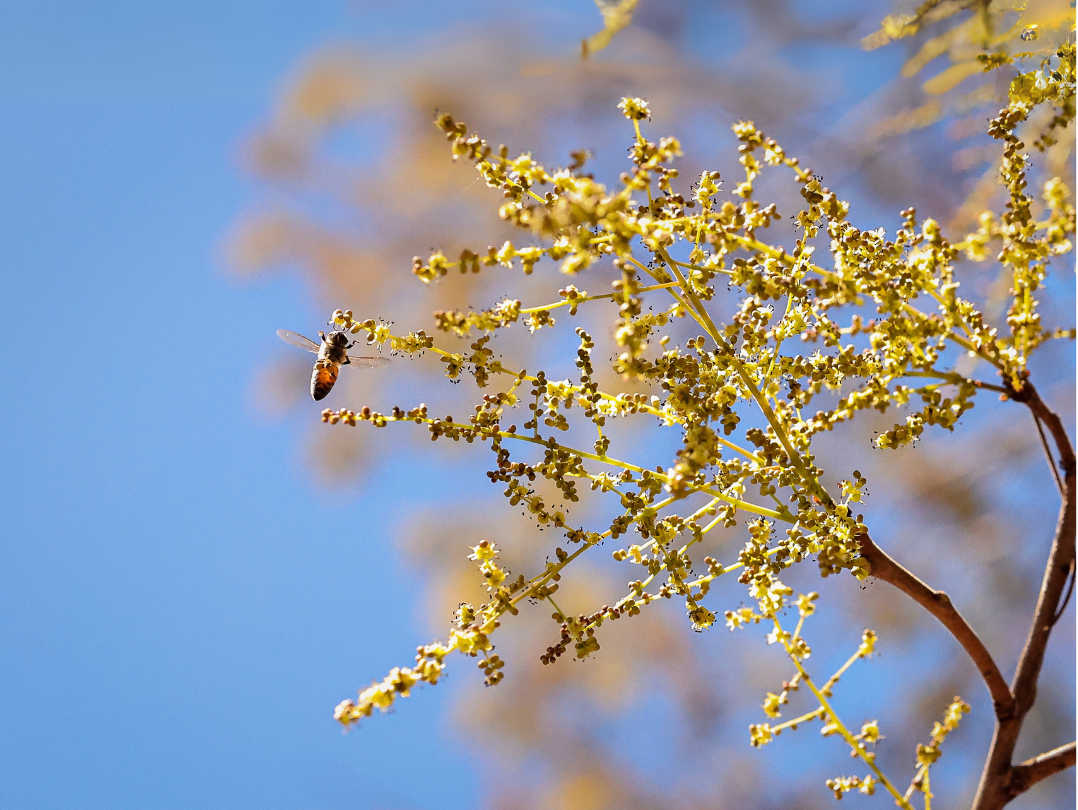Aroeira: The Tree That Sustains Life, Health, and Sustainability
At Urihi Superfoods, our commitment to sustainability goes beyond offering high-quality honey—it’s about preserving the delicate balance of some of Brazil’s most diverse biomes, such as the Cerrado and the Tropical Dry Forest. Our Aroeira honey is produced from the nectar collected by bees from the Myracrodruon urundeuva tree, which thrives in the Tropical Dry Forest. This species plays a crucial role in regenerating this biome and is the exclusive source of a honey with an unparalleled flavor and numerous health benefits. At the same time, Myracrodruon urundeuva supports biodiversity and provides a sustainable source of income for small producers in northern Minas Gerais. By choosing Urihi's Aroeira honey, you’re not just enjoying a nutrient-rich product—you’re actively contributing to the conservation of this vital tree and the ecosystem it sustains. Every jar of honey is a step toward environmental preservation and the socioeconomic development of the region.
What is the Aroeira Tree?
The Aroeira tree, also known as aroeira-do-sertão, urundeúva, or aroeira-preta, is a plant native to South America. It thrives primarily in regions of Tropical Dry Forest, which are characterized by a dry season lasting six months or more—a much more seasonal climate than that of tropical rainforests.
This medium-to-large tree can grow between 10 and 20 meters tall, with a straight trunk covered in dark, rough bark that peels off in irregular flakes. Its small, greenish-white flowers grow in clusters, and its fruits—a drupe-like structure—turn black when ripe.
Ecological Importance of the Aroeira Tree
Beyond its distinctive appearance, the Aroeira tree plays key ecological roles:
- Soil Stabilization: Its extensive root system helps prevent soil erosion, making it a vital species in fragile ecosystems.
- Biodiversity: The tree provides shelter and food for various wildlife species. A 2013 study found that the Aroeira tree serves as a habitat for 68 bird species, making it a valuable resource for ecological restoration, especially in degraded pastures.
Despite its ecological importance, the Aroeira tree faces growing scarcity. Overexploitation for its high-quality wood, combined with habitat destruction due to agricultural expansion, has led to a significant decline in its population. This scarcity highlights the urgency of conservation efforts and increases the value of products derived from the tree, such as medicinal extracts and honey.
Uses of the Aroeira Tree
The Aroeira tree has several traditional and modern applications:
- Wood: Renowned for its durability, strength, and resistance to insects and decay, Aroeira wood has traditionally been used in construction, especially for fences and rural structures. However, due to the reduction of the Tropical Dry Forest, cutting down Aroeira trees is now restricted.
- Medicinal Uses: The tree’s bark and leaves are widely used in traditional medicine for their anti-inflammatory, antimicrobial, and healing properties. Extracts from the Aroeira tree are used to treat infections, gastritis, ulcers, and skin conditions.
- Honey Production: The Aroeira tree’s flowers are essential for producing Aroeira honey, which is known for its distinctive flavor and health benefits, including antioxidant, anti-inflammatory, and antimicrobial properties.
- Ecological Purposes: The Aroeira tree plays a crucial role in preventing soil erosion and supporting biodiversity by providing food and habitat for wildlife, especially in the semi-arid Tropical Dry Forest biome.
Bioactive Compounds Found in the Aroeira Tree
The Aroeira tree contains several bioactive compounds that highlight its therapeutic potential:
- Tannins: Polyphenolic compounds with astringent properties that contribute to anti-inflammatory and antimicrobial activities, making them useful for treating wounds and infections.
- Flavonoids: Antioxidants that offer anti-inflammatory, anti-cancer, and cardioprotective effects, helping protect cells from oxidative stress.
- Terpenoids: Compounds known for their anti-inflammatory, antimicrobial, and potential anti-cancer effects. They also contribute to the tree’s characteristic aroma and some of its therapeutic properties.
- Alkaloids: Found in smaller quantities, alkaloids can have various biological effects, including pain relief and antimicrobial properties.
- Saponins: Compounds known for boosting the immune system, reducing cholesterol levels, and providing anti-cancer benefits.
Due to its rich variety of bioactive compounds, the Aroeira tree has been traditionally used in South American medicine to treat inflammatory conditions, gastrointestinal issues, respiratory problems, and skin ailments. The tree’s bark and resin are often utilized for their healing properties.
Aroeira Honey: A Sustainable Health Solution
Honey produced exclusively from the Aroeira tree’s flowers shares the tree’s powerful properties, with recent studies confirming its health-promoting effects. This underscores the potential of Aroeira honey as a natural, sustainable remedy with significant therapeutic value.
At Urihi Superfoods, we are committed to ethical beekeeping and the protection of Aroeira trees, ensuring that our products support both your health and the conservation of the Tropical Dry Forest biome. Our sustainability commitment includes full traceability for every product we offer.
Choose Sustainability with Urihi
By choosing Urihi, you support eco-friendly practices and local communities. Feel good about your choice—our products are good for you and for the planet.
Explore our store today and discover the natural goodness of Aroeira Raw Honey!
Author: Valentina Masso Ardila

